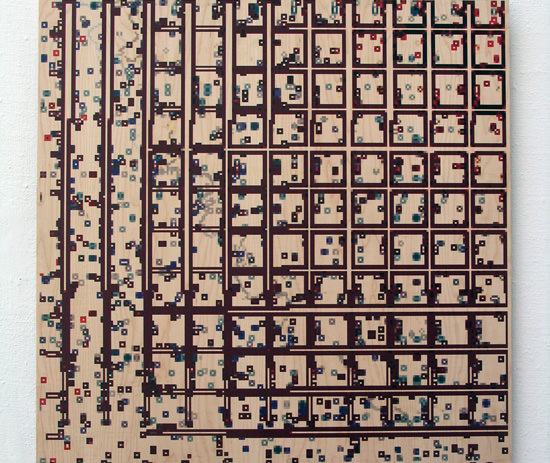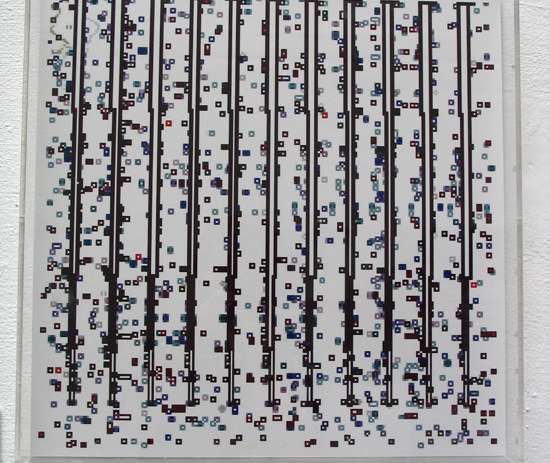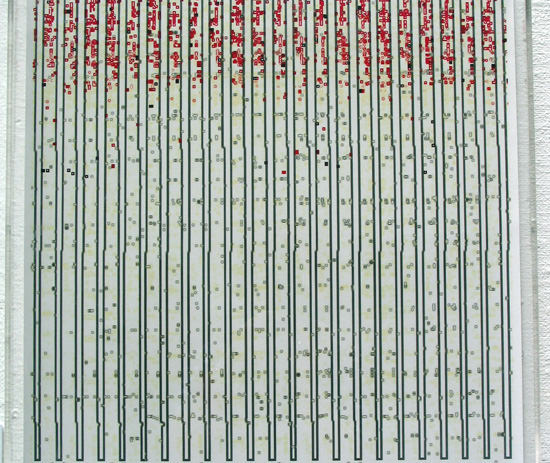Grid Structure
The action of repetition so essential to Fine Art printmaking is augmented through using the computer to modify and manipulate images from the macro to the micro scale. By investigating scale from macro to micro, the file size of the images ends up being very small, enlargement of the image is carefully recreated. The image is broken down into units that can then be re-assembled in either a precise or random order. This is where I see my work as being analogous to ‘musique concrete’ where natural sound is processed through electronic media.
These new images are printed/transferred into and onto a variety of materials including paper, aluminium, steel, stone, wood, acrylic and glass. Dynamics of scale also enables the imagery to be printed over extensive and diverse surfaces, allowing the emphasis to shift from 'mass production' to 'mass customisation'.
"What makes Myfanwy's use of the grid so intriguing is that whilst it is almost always a square grid, it's geometry is usually punctuated by the inclusion of additional elements that either give a secondary definition to the grid, or achieve parity with it. The grid therefore, is never the predominant visual symbol, because its orthogonally is always punctuated by elements of quite another scale. In the three-dimensional constructions, the grid is treated almost as a cage that appears to fully embrace the geometry of what is inside it, but this is an ambiguous relationship, because the interior never fully follows the geometry of its enclosure, setting up dynamic tensions between what is anticipated and what actually exists. This gives the work an exciting perceptual originality, which makes it intriguing and significant." Professor Andrew Stonyer, Artist and Reader in Fine Art. University of Gloucestershire, UK.


